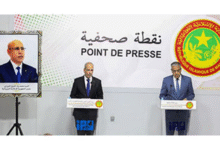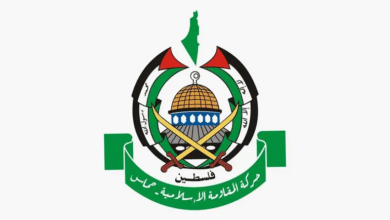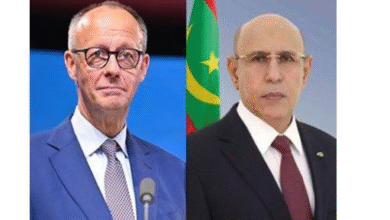U.S. Peace Plan for Ukraine: Key Provisions, Reactions, and a Complex Diplomatic Landscape

American media outlet Axios and Agence France-Presse (AFP) have revealed key details of a proposed U.S. peace plan aimed at ending the war in Ukraine. The plan—backed by President Donald Trump—includes major territorial concessions from Kyiv, limits on Ukraine’s military capacity, and a permanent commitment not to join NATO. The revelations have sparked significant international debate, given the far-reaching implications for Ukraine’s sovereignty and the broader European security architecture.
Ukrainian President Volodymyr Zelensky stated on Thursday that Ukraine is committed to working constructively toward the success of the U.S. proposals. He stressed that Kyiv will not “obstruct any diplomatic efforts” to end the conflict, underscoring the importance of maintaining stable support for Ukraine’s army and its defense operations.
U.S.–Ukraine Consultations
According to the White House, senior officials in the Trump administration met with Ukrainian representatives last week to discuss a peace arrangement that could be acceptable to both Kyiv and Moscow.
White House spokesperson Karoline Leavitt explained that Secretary of State Marco Rubio and U.S. Special Envoy Steve Witkoff took part in the meetings, adding that the administration has held “good conversations” with both sides of the conflict.
Leavitt also disclosed that Rubio and Witkoff had been working “secretly for a month” to understand what both Ukraine and Russia might be willing to concede in pursuit of a lasting peace.
Key Provisions of the Plan (AFP Version)
AFP reports that the American peace plan consists of 28 points and is fully endorsed by President Trump. The main provisions include:
- Ukraine ceding the entire Donbas region—including Luhansk and Donetsk—to Russia.
- Limiting the Ukrainian army to 600,000 troops.
- Permanent commitment by Kyiv never to join NATO.
- Deployment of European fighter jets in Poland to protect Ukraine, without any NATO troops stationed on Ukrainian soil.
Key Provisions (Axios Version)
Axios highlights additional and more detailed elements from the draft plan:
- Forcing Kyiv to give up additional territory in eastern Ukraine and restricting the size of its armed forces.
- A permanent guarantee that Ukraine will never join NATO.
- A coordinated Western military response to any further Russian incursion.
- Allocation of frozen Russian assets to help rebuild Ukraine.
- Lifting sanctions on Russia, restoring the U.S.–Russia partnership, and returning Moscow to the G8.
- Calling for Ukrainian elections within 100 days of reaching an agreement.
Ukraine’s Response: Openness with Firm Conditions
The Ukrainian presidency confirmed that it received the draft proposal from Washington and is prepared to engage constructively on any plan that ensures a “just end” to the war.
It emphasized its support for Trump’s efforts to stop the bloodshed and noted that Zelensky expects to discuss diplomatic opportunities directly with President Trump in the coming days.
Speaking at the UN Security Council, Ukraine’s deputy ambassador reiterated that a ceasefire is a prerequisite for meaningful negotiations. However, she reaffirmed Kyiv’s non-negotiable red lines:
- No formal or informal recognition of Russian sovereignty over occupied territories.
- No restrictions on Ukraine’s right to self-defense or the size/capacity of its armed forces.
- Full respect for Ukraine’s sovereignty, including its right to choose its alliances.
European Position: No Peace Based on Concessions
Reports of the U.S. proposal surprised many European diplomats, who insisted that any peace initiative must be coordinated closely with Ukraine and the EU.
EU foreign policy chief Kaja Kallas stressed that Europe supports a “fair, lasting, and comprehensive” peace, and pointed out that Russia continues deadly attacks and has shown little willingness to negotiate seriously.
French Foreign Minister Jean-Noël Barrot stated that “peace cannot mean surrender,” adding that Ukrainians will never accept any arrangement that resembles capitulation.
Russia’s Position
The Kremlin responded that any peace plan must address the “root causes” of the conflict.
Kremlin spokesperson Dmitry Peskov confirmed ongoing contacts with the United States but said there are no negotiations currently underway regarding the reported plan.
Military Developments on the Ground
These diplomatic efforts come at a critical moment for Kyiv, as its forces face intense pressure along the front lines amid a corruption scandal that led to the dismissal of two ministers.
Russian military officials claimed full control of the strategic city of Kupyansk in northeastern Ukraine—an assertion denied by Ukraine’s General Staff, which insists the city remains under Ukrainian defense forces.
Meanwhile, in the Zaporizhzhia region, local authorities reported that a Russian strike killed five people and injured three others, with images showing buildings engulfed in flames and streets filled with debris.
Conclusion
The U.S. peace proposal represents one of the most comprehensive diplomatic efforts yet to end the war—but also one of the most controversial, given its emphasis on territorial concessions and military limitations for Ukraine.
As diplomacy intensifies, the conflict appears to be entering a decisive phase where political calculations, military realities, and international pressure will all play critical roles.
Whether this plan becomes a roadmap for peace—or a new source of international disagreement—will depend on decisions made in the coming weeks by Kyiv, Moscow, Washington, and Europe.








